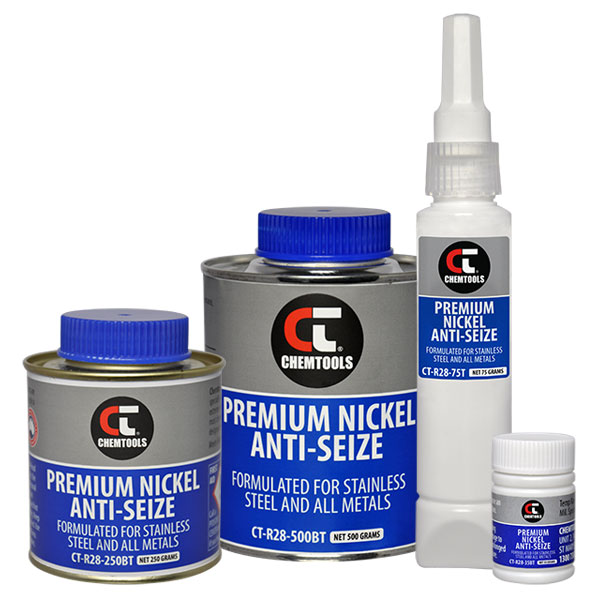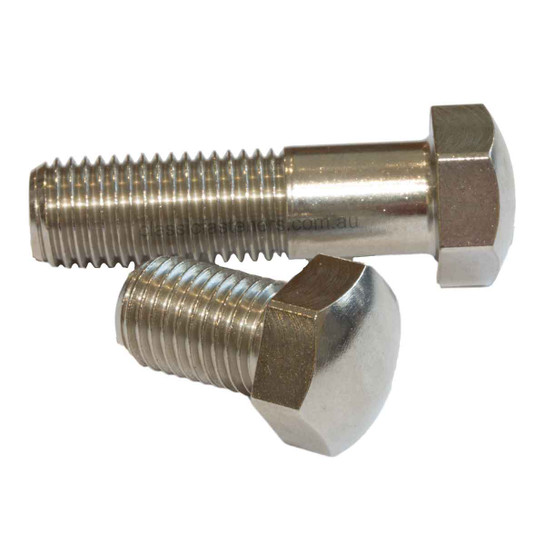What is thread galling and how to prevent it.
Thread galling occurs during installation when friction and pressure causes the seizing of threads. Light seizing increases the torque required to turn the bolt often resulting in an assembly that may feel (or measured using a torque wrench) adequately tightened when in fact proper bolt stretch has not been achieved. This can result in failure of the joint to remain secure when in use.
Excessive galling can also cause the fastener assembly to completely seize such that the bolt has to be cut or the nut split to allow removal.
Materials susceptible to galling.
Stainless steel, aluminium and titanium are the materials most prone to galling. Fasteners with fine or damaged thread are also more likely to exhibit the problem. Hardened steel bolts, especially when zinc plated, rarely gall.
What Is Actually Happening?
Thread surfaces have microscopic high points that can rub together during fastening. In most cases this does not present a problem as the points slide over each other without damage.
Under certain conditions however, the surfaces will not slide past each other. The high points will then shear and lock together, greatly increasing friction and heat. As tightening continues the increased pressure results in more material being sheared off the threads. This cycle continues with even more shearing and locking until the threads are destroyed and the fastener will no longer turn in either direction.
How to prevent galling
Slow the speed of installation.
Generation of heat increases friction and increases the chance of galling. It is recommended that stainless steel fasteners are installed without the use of power tools.
Do not use bolts to pull the joint together.
Using bolts to pull the joint together increases the heat generated in the fastener that leads to increased likely hood of galling. Use a clamp to pull parts together before bolting when possible.
Use a lubricant.
The use of a lubricant dramatically reduces galling and is the number one recommended method to overcome this problem.
A nickel based anti-seize lubricant is recommended for use with stainless steel.
The use of something like WD-40 or even a thread locking agent can also reduce friction and prevent galling.
The use of a Copper based anti-seize is NOT recommended with stainless steel. Copper is more noble than stainless steel and will cause corrosion of the stainless steel possibly causing the joint to seize over time and prevent its removal.
We strongly recommend the use of Nickel based anti-seize when using stainless steel fasteners.
Do not use fasteners with damaged or dirty threads.
Damaged or dirty threads will cause increased friction and therefore heat during installation increasing the chance of galling.
Nylon insert or prevailing torque nuts.
Use extra care when using these nuts and slow down installation to allow time for heat generated when installing to dissipate.
If a fastener begins to bind STOP!
Wait a minute or two for the fastener to cool, then back it off check for dirty threads and consider discarding the nut and start again with additional lubricant.

 Australian Dollar
Australian Dollar
 United States
United States
 New Zealand
New Zealand
 Euro
Euro
 Canada
Canada
 Japanese Yen
Japanese Yen

